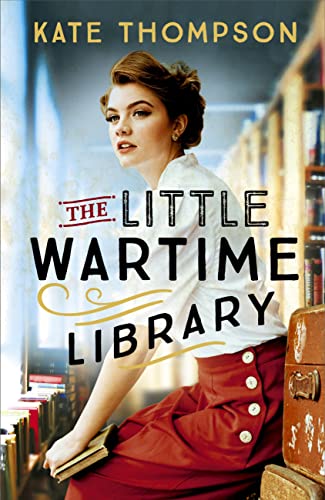
Today’s post is by author, editor, and book coach Julie Artz (@julieartz). Download her Craft Your Query Workbook.
There’s been a lot of discussion recently about the challenges around publishing with the Big Five, some of it overblown and some of it valid. If you’ve been reading this blog for any time at all, you’ve probably seen some really excellent discussion of alternative options, either in Jane’s Key Book Publishing Paths report, or in her deeper dive into how to evaluate small presses, or in a recent post about the case for pursuing a traditional publishing deal without an agent.
If you’ve decided to forego the agent query trenches and seek a press that accepts unagented work, here’s a checklist to help you compile a submission list you can feel confident in as you prepare to pitch without an agent.
Make your list
Many long-time markets have closed to unsolicited submissions since the pandemic due to resourcing issues. That means any pre-2020 lists you have floating around on your hard drive might need a refresh. Here are three great resources for compiling your initial list of publishers who accept unagented work:
While you want to cast your net broadly with this initial list, you’ll still want to make sure every press you put on your initial list meets the following criteria:
- Open to unagented/unsolicited submissions
- Accepts your manuscript’s genre
- Accepts your manuscript’s age category
Note that some presses only open for specific windows (more on this later) or have contests that may have a reading fee associated. A reading fee isn’t a red flag, but it’s definitely something you’ll want to be prepared for as you plan.
Check it twice
Now that you have a broad list of possibilities, it’s time to do some assessment. Jane has provided an in-depth exploration of how to evaluate the distribution channels, marketing, and sales models of small presses here that’s worth a look if you decide to go this route. But before you dig deeper, here are some easy tips for narrowing the list that will save you time on the deep dive. As you go through the checklists below, remove the presses that don’t feel like a good fit at each step in this process. By the end, you’ll have a short list of presses to consider.
1. Review the publisher’s website.
For each press, look up their website and ask yourself:
- Does the site look clean and professional?
- Are the submission guidelines clear?
- Do the covers of their books look like they could fit on the shelf in your local indie in terms of quality of cover design?
- Do they have a variety of authors or just one or two who are also involved in the press editorially? *
* Like reading fees, this is not necessarily a red flag, but it is something to know going in. It may be a newer press looking to expand beyond its founders, which could make them hungry for fresh voices. Either way, it’s good to know.
2. Evaluate their existing titles.
Jot down several of the presses’ titles and look them up on your favorite online retailer, paying special attention to:
- Number of reader reviews. You’re not necessarily looking for 9000+ reviews, but keep in mind that your title is unlikely to vastly exceed the average reviews you see for their list.
- Number of trade reviews. Look for the big trade reviewers here (Kirkus, Publishers Weekly, etc), for reviews from authors you recognize, for magazine/newspaper reviews, and also for the smaller reviewers who also work with the university and small press market like Foreword.
Then look up a handful of titles at your local library to see if library distribution is something you can expect if you publish with them.
3. Make note of contests or open calls.
Not all presses are open to submissions 365 days a year. Many presses have short submission windows, special calls for submissions, or contests. Make note of those so you can build that into the submission schedule you’ll create.
Put it in order
Now that you have refined your list of publishers, it’s time to prioritize them into a submission schedule you can follow over the weeks or months ahead as you pitch.
- Highlight your top five. These are the ones that are the best fit based on your research and will go into your first round of pitching.
- Highlight your bottom five. It can be tempting to put every press out there on your list, but if you have a bad feeling about any of these ones in the bottom five, now might be a good time to do one more list pruning. You want to feel good about publishing with any press you pitch.
- Prioritize the remaining presses. I recommend grouping the remaining presses into batches of five and not sending the next round out until you’ve at least heard something back from some of the presses in the previous round. This is where you’ll want to build in those special calls and open periods so that you don’t forget them.
Polish your pitch package
Just because small and midsize presses accept unagented work doesn’t mean getting a publishing deal with them is a walk in the park. Writers are catching on to all that’s great about small and midsize press publishing, and these presses typically publish few titles per year, which means they don’t have many slots to fill. You still want to do all the things you’ve done in the past, like when trying to land an agent. Make sure your manuscript is query-ready and write pitch that will catch an editor’s eye. If you’re not sure your query is up to snuff, check out my free Craft Your Query Workbook for some great tips.
Pitch in batches
You’ve done your research. You’ve narrowed and prioritized your list. You’ve polished your pitch package. Now you’re ready to send out that first batch of queries. I know the waiting can be tough, but now is a great time to read one of those books on your to-be-read pile or even start work on your next story. Hopefully this checklist has reassured you that you’ve done everything you can to give your book the best chance possible.
Julie Artz is a writer, editor, and book coach tucked away in a magical forest in the Pacific Northwest with her family and three furry familiars. Her recent stories include “The Wending Way” which appeared in Beyond the Latch and Lever, a Speculative Anthology, and “Space Carrion,” which appeared as part of Villains and Vengeance: A Sirens Benefit Anthology.






